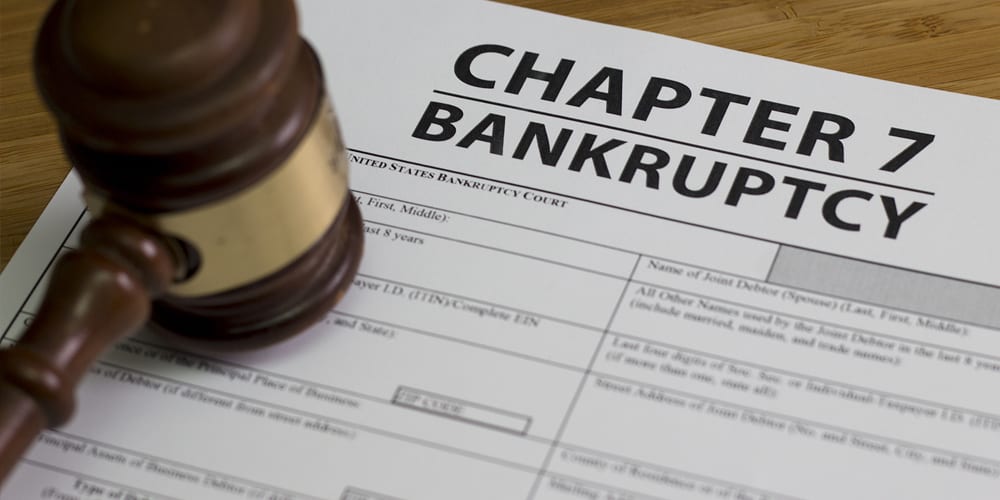Disclaimer: This article includes a brief overview of Chapter 7 bankruptcies. The information is not, nor is it intended to be legal advice. It is imperative that any action you take to be done on the advice of competent legal counsel, and not based solely upon this article.
In the course of business, some companies find themselves unable to pay their debts. For whatever reason this occurs, it threatens their continuance as a viable business entity. To assist corporations with these issues, most countries have in place some sort of process for liquidation and/or reorganization. In the United States, federal bankruptcy law (Title 11) governs both of these situations. In this article we’ll cover the steps in the liquidation process.
Chapter 7 of Title 11 governs corporate liquidation – termination of the business and sale of its assets to repay creditors at least some portion of the debt incurred. In recent years, business filings have hovered around 20,000 per year.
Steps in the Chapter 7 Bankruptcy Process
- Bankruptcy Filing: Chapter 7 bankruptcy begins with the customer filing a petition with the bankruptcy court. The customer is also required to provide the court a number of other documents including a list of all creditors and the amount and nature of their claims. The commencement of bankruptcy creates an “estate” which becomes the temporary legal owner of all of the customer’s property.
- Appointment of Trustee: Upon filing the bankruptcy petition, an impartial trustee is appointed by the court. The trustee will be responsible for administering the case and liquidating the customer’s nonexempt assets. In addition, the trustee may be authorized by the court to operate the customer’s business for a limited period of time, if such operation would benefit the creditors. The creditors do have the right to elect a successor trustee at the meeting of creditors.
- Notice of Filing: The court clerk sends a notice of filing of the petition to all creditors on the list (mentioned above). The filing of the petition prohibits creditors from initiating or continuing any lawsuits and/or collection activities against the customer. This “order” is automatically enforced regardless of whether the creditor receives notice of the bankruptcy filing from the court clerk.
- Meeting of Creditors: A meeting of creditors is usually held 20-40 days after the petition is filed. The customer must appear at this meeting. Creditors may appear and ask questions regarding the debtor’s financial affairs and property. The trustee will also attend this meeting and is required to examine the customer orally to ensure that he is aware of the potential consequences of seeking a discharge in bankruptcy. In order to preserve their independent judgment, bankruptcy judges are prohibited from attending the meeting of creditors.
- Formation of Creditors’ Committee: A creditors’ committee may be formed at the meeting of creditors; however, this body’s role is very limited in comparison to a Chapter 11 creditors’ committee. The members may consult with the trustee in connection with the administration of the estate, make recommendations respecting the performance of the trustee’s duties, and submit questions to the court. They are not authorized to take any substantive action on their own or to be professionally represented.
- Bankruptcy Discharge: The discharge releases the customer from personal liability for discharged debts. It also prevents creditors owed those debts from taking any action against the customer or his property. In most cases, the discharge will be granted to the customer relatively early in the case; usually 60 to 90 days after the date first set for the meeting of the creditors. In certain jurisdictions, secured creditors may retain some rights to seize pledged property, even if the discharge is granted.
- Proof of Claim: Chapter 7 bankruptcies are categorized as “no asset” or “asset” cases. In “no asset” bankruptcies, there is no need for creditors to file proofs of claim as there will be no distribution of moneys. If the trustee later recovers assets for distribution, creditors will receive notice of the fact and time to file proofs. In “asset” Chapter 7s, creditors are required to file their proofs of claim within 90 days after the first date set for the meeting of creditors.
- Liquidation of Assets: The trustee sells off the nonexempt assets, generally for cash.
- Payment of Claims: Distribution of the property of the estate is governed by Section 726 of the code and defines classes of claims. Each class must be paid in full before the next lower class is paid anything. The general rule is that creditors who take the least risk are paid first. Essentially, the priorities for payment are:
- Secured creditors. They are paid with funds generated by the liquidation of assets in which they have perfected liens. If the collateral is insufficient to pay the claim in full, the deficiency is usually treated as a general, unsecured claim.
- Debts incurred in the ordinary course of the liquidation, including administrative expenses arising in the bankruptcy.
- Pre-petition priority claims, such as debts incurred between the date of an involuntary petition and the date an order for relief is entered, certain wage and benefit claims, and certain tax claims.
- General unsecured creditors.
- Shareholders.
Check out these other Bankruptcy articles on our website.
For more information on our services, contact us at 844.937.3268 today!
